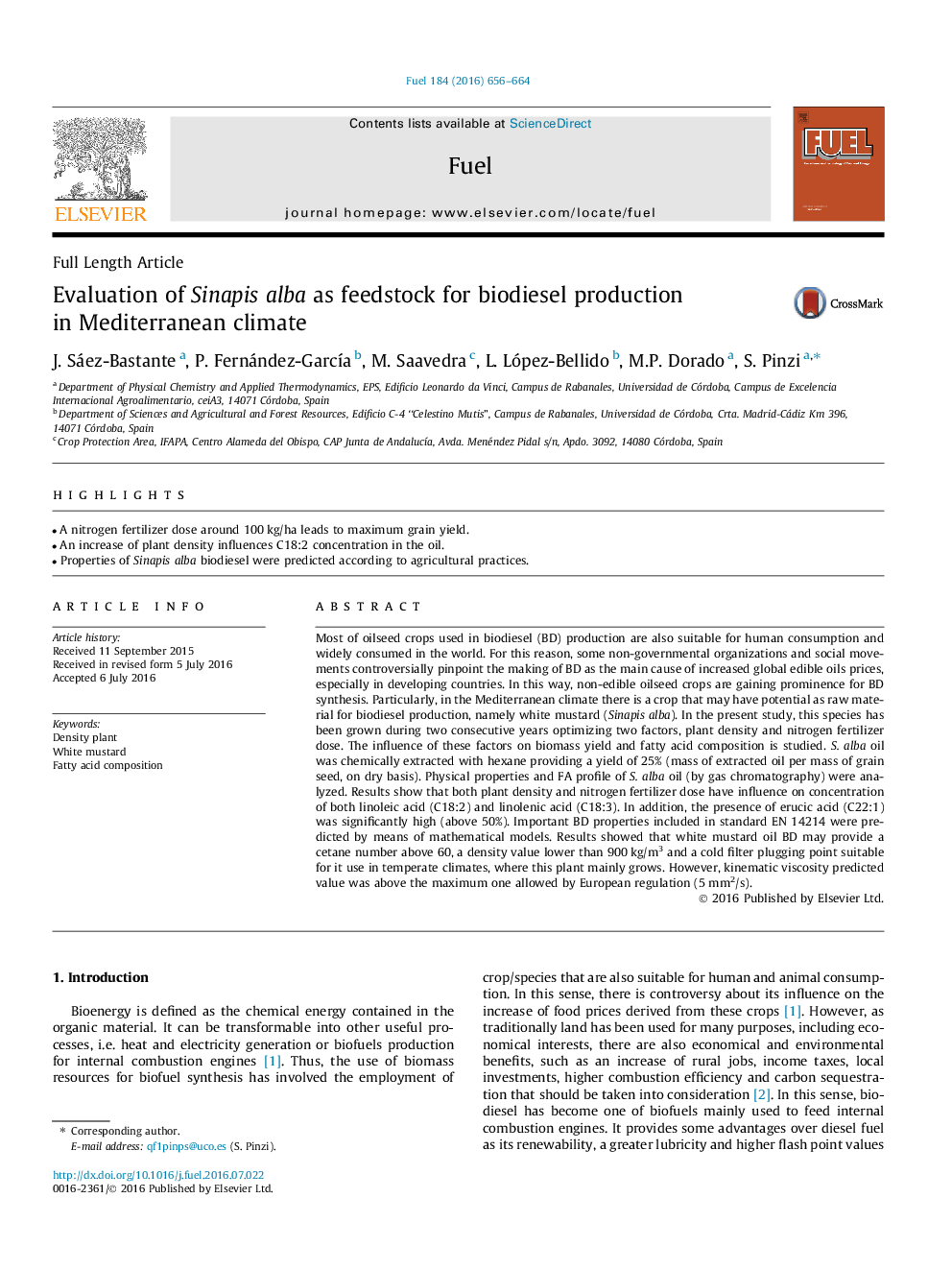| Article ID | Journal | Published Year | Pages | File Type |
|---|---|---|---|---|
| 6633114 | Fuel | 2016 | 9 Pages |
Abstract
Most of oilseed crops used in biodiesel (BD) production are also suitable for human consumption and widely consumed in the world. For this reason, some non-governmental organizations and social movements controversially pinpoint the making of BD as the main cause of increased global edible oils prices, especially in developing countries. In this way, non-edible oilseed crops are gaining prominence for BD synthesis. Particularly, in the Mediterranean climate there is a crop that may have potential as raw material for biodiesel production, namely white mustard (Sinapis alba). In the present study, this species has been grown during two consecutive years optimizing two factors, plant density and nitrogen fertilizer dose. The influence of these factors on biomass yield and fatty acid composition is studied. S. alba oil was chemically extracted with hexane providing a yield of 25% (mass of extracted oil per mass of grain seed, on dry basis). Physical properties and FA profile of S. alba oil (by gas chromatography) were analyzed. Results show that both plant density and nitrogen fertilizer dose have influence on concentration of both linoleic acid (C18:2) and linolenic acid (C18:3). In addition, the presence of erucic acid (C22:1) was significantly high (above 50%). Important BD properties included in standard EN 14214 were predicted by means of mathematical models. Results showed that white mustard oil BD may provide a cetane number above 60, a density value lower than 900Â kg/m3 and a cold filter plugging point suitable for it use in temperate climates, where this plant mainly grows. However, kinematic viscosity predicted value was above the maximum one allowed by European regulation (5Â mm2/s).
Keywords
Related Topics
Physical Sciences and Engineering
Chemical Engineering
Chemical Engineering (General)
Authors
J. Sáez-Bastante, P. Fernández-GarcÃa, M. Saavedra, L. López-Bellido, M.P. Dorado, S. Pinzi,
